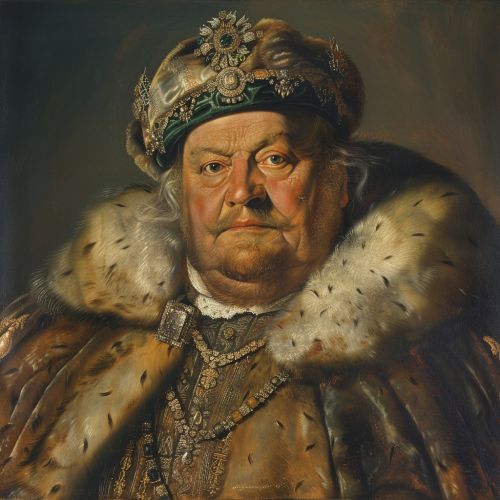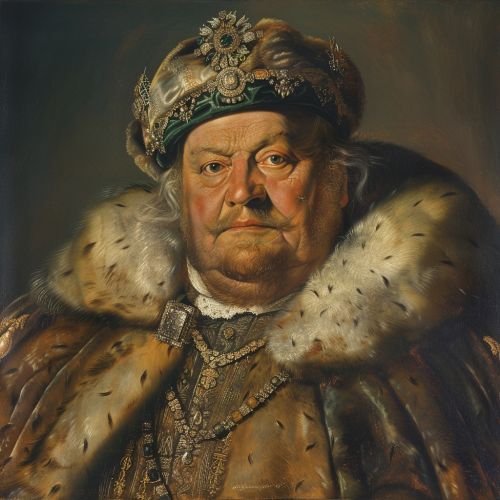Henry VIII
Early Life and Ascension to the Throne
Henry VIII was born on June 28, 1491, at Greenwich Palace, the second son of Henry VII and Elizabeth of York. He was initially not expected to become king, as his elder brother, Arthur, Prince of Wales, was the heir apparent. However, Arthur's untimely death in 1502 left Henry as the next in line. Henry received an extensive education, excelling in languages, music, theology, and sports. His upbringing was influenced by the Renaissance humanist ideals, which later shaped his reign.
Henry ascended to the throne on April 21, 1509, following the death of his father. His early reign was marked by a desire to establish himself as a powerful and effective monarch, which included marrying Catherine of Aragon, his brother's widow, to solidify alliances and secure his dynasty.
Marriages and Annulments
Henry VIII is perhaps best known for his six marriages, which were driven by his quest for a male heir and personal desires. His first marriage to Catherine of Aragon produced only one surviving child, Mary, leading Henry to seek an annulment. The Pope's refusal to annul the marriage led to Henry's break with the Roman Catholic Church and the establishment of the Church of England.
His subsequent marriages were to Anne Boleyn, who bore him Elizabeth but was executed on charges of adultery and treason; Jane Seymour, who gave birth to his only male heir, Edward, but died shortly after childbirth; Anne of Cleves, whom he divorced; Catherine Howard, who was executed for adultery; and Catherine Parr, who outlived him.
Religious Reformation
Henry VIII's reign was marked by significant religious upheaval. The English Reformation began as a result of his desire to annul his marriage to Catherine of Aragon. In 1534, the Act of Supremacy declared Henry the Supreme Head of the Church of England, severing ties with the Pope. This move allowed Henry to control religious doctrine, clerical appointments, and the wealth of the church.
The dissolution of the monasteries between 1536 and 1541 was a major aspect of the Reformation, leading to the redistribution of monastic lands and wealth to the crown and the nobility. Henry's religious policies fluctuated between Protestantism and Catholicism, reflecting his personal beliefs and political needs.
Political and Military Endeavors
Henry VIII's foreign policy was characterized by his ambitions to assert England's influence in Europe. He engaged in several military campaigns, including wars against France and Scotland. The Battle of the Spurs in 1513 and the Battle of Flodden in the same year were notable victories. However, his military ventures often strained the royal finances and required heavy taxation.
Domestically, Henry's reign saw the strengthening of the royal navy, which laid the foundations for England's future naval dominance. The establishment of the Council of the North and the Council of Wales and the Marches helped to consolidate royal authority in the regions.
Economic and Social Impact
Henry VIII's reign had profound economic and social consequences. The dissolution of the monasteries not only altered the religious landscape but also had significant economic implications. Monastic lands were sold off, leading to the rise of a new class of landowners and increasing the wealth of the gentry.
The Debasement of coinage in the 1540s, intended to fund Henry's military campaigns, led to inflation and economic instability. Social unrest, such as the Pilgrimage of Grace in 1536, reflected widespread discontent with Henry's religious and economic policies.
Legacy and Death
Henry VIII died on January 28, 1547, at the age of 55. His death marked the end of a tumultuous reign that had transformed England politically, religiously, and socially. His only son, Edward VI, succeeded him, but Henry's legacy continued to shape English history for generations.
Henry VIII's reign is often remembered for his six marriages and the establishment of the Church of England, but his impact on the monarchy, governance, and society was far-reaching. His actions set the stage for the Tudor dynasty's continued influence and the eventual rise of England as a major European power.


